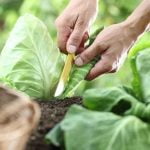Small gardens may present a unique set of challenges, but with the right landscape ideas for small gardens, they can also offer exciting opportunities for creativity and innovation. From maximizing vertical space to incorporating color and texture, there are numerous ways to make the most of limited outdoor space. In this article, we will explore various tips and techniques to help you transform your small garden into a beautiful and functional oasis.
One of the main challenges of landscaping small gardens is the limited amount of space available. However, this constraint can also be seen as an opportunity to think outside the box and come up with creative solutions.
By utilizing vertical space effectively and strategically placing plants and furniture, you can create a visually appealing garden that feels spacious and inviting. Whether it’s through hanging plants or trellises, there are plenty of ways to make use of every inch of your small outdoor area.
In addition to maximizing vertical space, container gardening is another popular option for small garden owners. By using pots, planters, and raised beds, you can create a stunning garden that is easy to maintain and customize. With the right plant selection and design choices, container gardening allows you to experiment with different layouts and styles while adding beauty and charm to your small outdoor space. Stay tuned as we delve into more landscape ideas tailored specifically for small gardens.
Maximizing Vertical Space
Small gardens may pose a challenge when it comes to maximizing space, but with the right techniques, even the smallest of outdoor areas can be transformed into a lush and inviting oasis. One effective strategy for optimizing space in small gardens is by utilizing vertical elements such as walls, trellises, and hanging plants. By thinking creatively and strategically, you can make the most of every inch of your garden.
Utilizing Walls
When working with limited ground space in a small garden, look up – walls present an often overlooked opportunity for adding greenery and interest to your outdoor area. Consider installing wall-mounted planters or shelves to create a vertical garden filled with herbs, succulents, or colorful flowers. Vertical gardening not only adds visual appeal but also helps save precious ground space.
Trellises and Hanging Plants
Another effective way to maximize vertical space in a small garden is by incorporating trellises and hanging plants. Climbing plants like ivy, jasmine, or climbing roses can be trained to grow upwards on trellises, adding height and dimension to your garden. Additionally, hanging planters or baskets filled with trailing vines or cascading flowers can create a whimsical and dynamic display that draws the eye upward. Hanging plants are especially useful in smaller gardens where floor space is limited.
Incorporating vertical elements into your small garden not only enhances its aesthetic appeal but also helps create the illusion of more space. By utilizing walls, trellises, and hanging plants effectively, you can transform your compact outdoor area into a verdant retreat that feels larger and more inviting. Experiment with different arrangements and plant choices to discover unique landscape ideas for small gardens that suit your style and maximize your available space.
Container Gardening
When it comes to creating a successful container garden, it’s essential to consider factors such as sunlight exposure, soil type, and watering needs for each specific plant. By selecting plants that are well-suited for your particular growing conditions, you can ensure a thriving garden that will brighten up your outdoor space. Additionally, choosing containers that complement your overall design aesthetic can help tie everything together and create a cohesive look.
In addition to traditional pots and planters, raised beds are another popular option for small gardens. Raised beds not only provide ample planting space but also offer better drainage and soil control compared to planting directly in the ground.
They can be customized to fit your garden’s layout and design theme, making them a versatile choice for any small garden space. Ultimately, container gardening allows you to showcase your creativity while maximizing the potential of your limited outdoor area with vibrant colors and lush greenery.
Creating Illusions of Space
Small gardens may present unique challenges in terms of space, but with the right design techniques, it is possible to create illusions of spaciousness and depth. One effective way to make a small garden appear larger is by utilizing diagonal lines in the layout. Diagonal paths, borders, or rows of plants can visually expand the space and lead the eye towards the garden’s boundaries, creating an illusion of depth and size.
Another key strategy for enhancing the sense of space in a small garden is by incorporating perspectives. By planting taller species at the back and gradually transitioning to shorter plants towards the front, you can create a layered effect that adds dimension to your garden. Additionally, using different shades of green or varying plant textures can help create visual interest and make the space seem larger than it actually is.
When it comes to hardscaping elements in a small garden, opt for materials that reflect light, such as glossy tiles or metallic accents. Light-colored paving stones or gravel can also brighten up the area and give the impression of openness.
Furthermore, incorporating mirrors strategically within the landscape can reflect light and views, making the garden feel more expansive. By implementing these design techniques effectively, you can transform your small garden into a visually stunning oasis that seems much larger than its physical dimensions suggest.
| Design Techniques | Impact |
|---|---|
| Diagonal lines in layout | Creates an illusion of depth and size |
| Incorporating perspectives with plant heights | Adds dimension and visual interest |
| Using reflective materials like mirrors | Makes the garden feel more expansive |
Incorporating Color and Texture
Small gardens may present a challenge when it comes to adding color and texture, but with the right strategies, they can be transformed into vibrant and visually appealing spaces. One of the key landscape ideas for small gardens is to carefully select a color palette that complements the size of the space. Opting for bright and bold colors can make a small garden feel cheerful and lively, while incorporating softer hues can create a calming and serene atmosphere.
In addition to selecting the right colors, adding texture to a small garden can enhance its visual appeal. Mixing different textures such as rough stones, smooth pebbles, and lush greenery can create depth and interest in a limited space. Consider incorporating ornamental grasses, succulents, or ferns for added textural elements that will give your small garden a dynamic look.
Another way to incorporate color and texture in a small garden is through strategic placement of plants and flowers. Grouping plants with similar colors or textures together can create visual impact and make the space feel cohesive. Additionally, mixing flowering plants with foliage plants can add variety and interest to the garden throughout the seasons. By carefully planning your plant selection and arrangement, you can easily add vibrancy and depth to your small garden landscape.
| Color Palette | Texture Elements |
|---|---|
| Bright and bold colors for cheerfulness | Mixing stones, pebbles, greenery |
| Soft hues for calming atmosphere | Incorporating grasses, succulents, ferns |
Functional Furniture
When it comes to landscaping small gardens, choosing the right furniture is essential to maximize both aesthetic appeal and functionality. The limited space available in small gardens requires careful consideration when selecting furniture pieces. One key landscape idea for small gardens is to opt for multi-functional furniture that can serve more than one purpose. This not only saves space but also adds versatility to your outdoor area.
To make the most of your small garden space, consider investing in furniture pieces that can double as storage solutions. For example, benches or ottomans with hidden compartments provide additional storage for gardening tools, cushions, or other outdoor accessories while also serving as seating options. Additionally, collapsible or stackable furniture is a great choice for small gardens as it can be easily stored away when not in use, creating more open space for other activities.
Another landscape idea for small gardens is to choose furniture that complements the overall design scheme of your outdoor space. Opt for materials that are durable and weather-resistant, such as metal or synthetic wicker, to ensure longevity in a garden setting.
Consider incorporating pieces with clean lines and minimalist designs to create a cohesive and visually appealing look in your small garden area. By carefully selecting functional furniture that meets both aesthetic and practical needs, you can enhance the usability and beauty of your small garden space.
- Choose multi-functional furniture pieces
- Opt for storage solutions within furniture
- Select collapsible or stackable options
- Complement overall design scheme with durable materials
- Incorporate clean lines and minimalist designs
Low-Maintenance Plant Options
When it comes to landscaping small gardens, one of the key considerations is choosing plants that are low-maintenance yet still add beauty and interest to the space. Selecting the right plants can help minimize the time and effort needed for upkeep while maximizing the visual impact of your garden. Here are some recommendations for low-maintenance plant options that thrive in small spaces with minimal care:
- Succulents: Succulents are a popular choice for small gardens due to their unique shapes and colors, as well as their ability to store water in their leaves. These drought-tolerant plants require very little watering and are perfect for adding texture and variety to your garden.
- Ornamental Grasses: Ornamental grasses are another great option for low-maintenance landscaping in small gardens. They come in a variety of heights, colors, and textures, providing movement and interest to your outdoor space without requiring much attention.
- Herbs: Herbs like rosemary, thyme, and mint not only add fragrance and flavor to your cooking but also make excellent ornamental additions to a small garden. These versatile plants are easy to grow, requiring only occasional watering and pruning.
Incorporating these low-maintenance plant options into your small garden design can help create a beautiful oasis that doesn’t demand constant upkeep. Whether you have limited time or gardening experience, these plants offer a fuss-free way to enhance the look and feel of your outdoor space. By carefully selecting plants that thrive in small spaces with minimal care, you can enjoy a vibrant and lush garden without all the hassle.
Ultimately, the key to successful gardening in a small space lies in choosing plants that suit both your aesthetic preferences and practical needs. From succulents to ornamental grasses to herbs, there is a wide range of low-maintenance plant options available for creating a thriving garden in even the smallest of landscapes. By incorporating these recommendations into your design plan, you can transform your compact outdoor area into a flourishing green retreat with ease.
Lighting Design
When it comes to landscape ideas for small gardens, lighting plays a crucial role in enhancing the ambiance and creating a welcoming atmosphere. Strategic lighting choices can not only illuminate the space but also extend its usability well into the evening hours. Whether you want to highlight specific plants or create a cozy outdoor setting, proper lighting design can make a significant impact on the overall look and feel of your small garden.
Types of Lighting
There are various types of lighting options available to enhance your small garden. From pathway lights to spotlights, string lights to lanterns, each type serves a specific purpose in illuminating different areas of your garden. Consider mixing and matching different types of lighting fixtures to create layers of light and add depth to your outdoor space.
Placement and Design
One important aspect to consider when designing the lighting for your small garden is the placement of fixtures. Think about highlighting key features such as planters, sculptures, or seating areas with well-placed lights. Create focal points by strategically positioning lighting fixtures in areas that draw the eye and add visual interest. Additionally, consider incorporating uplighting and downlighting techniques to create depth and highlight textures within the landscape.
Energy-Efficient Options
Incorporating energy-efficient lighting options not only benefits the environment but also helps save on electricity costs in the long run. LED lights are a popular choice for outdoor settings due to their durability and low energy consumption. Solar-powered lights are another eco-friendly option that eliminates the need for wiring or batteries, making them ideal for small gardens with limited space. By choosing sustainable lighting solutions, you can create a beautiful ambiance while reducing your carbon footprint.
Sustainable Practices
When it comes to designing and maintaining a small garden, incorporating sustainable practices is not only beneficial for the environment but can also save time and money in the long run. There are several eco-friendly landscaping ideas that can be implemented in small gardens to create a harmonious balance between nature and design.
One of the key principles of sustainable gardening is water conservation. In small gardens, using a drip irrigation system or installing a rain barrel to collect water for plants can help reduce water waste and promote efficient watering practices. Additionally, choosing native plants that are adapted to the local climate and require less water can also contribute to a more eco-friendly garden space.
Composting is another sustainable practice that can benefit small gardens by providing nutrient-rich soil for plants. Setting up a compost bin or using worm composting techniques can help reduce waste from the garden and kitchen while producing natural fertilizer for healthy plant growth. By integrating these sustainable practices into small garden design, homeowners can create beautiful outdoor spaces that are both visually appealing and environmentally conscious.
Conclusion
In conclusion, landscaping small gardens may present challenges, but it also offers a unique opportunity for creativity and innovation. By maximizing vertical space through the use of walls, trellises, and hanging plants, small garden owners can create a lush and inviting oasis even in limited square footage. Additionally, container gardening provides endless possibilities for creating stunning arrangements with pots, planters, and raised beds.
To make the most of a small garden, it’s essential to incorporate design techniques that create illusions of space. By carefully selecting colors and textures, as well as functional furniture that serves both aesthetic and practical purposes, small gardens can appear larger and more inviting. Moreover, low-maintenance plant options allow for easy upkeep while still enjoying the beauty of nature.
In exploring sustainable practices like eco-friendly landscaping ideas and strategic lighting design that enhances the ambiance of a small garden, individuals can create a truly environmentally conscious outdoor space. Ultimately, with these landscape ideas for small gardens in mind, there are endless opportunities to transform even the tiniest of spaces into a vibrant and thriving green sanctuary. Let your imagination run wild and get creative with your small garden space – the possibilities are truly endless.

Welcome to my gardening blog! I am passionate about plants and enjoy sharing my knowledge and experiences with others. In this blog, I will write about everything related to gardening, from tips on how to get started to updates on my own garden projects.





